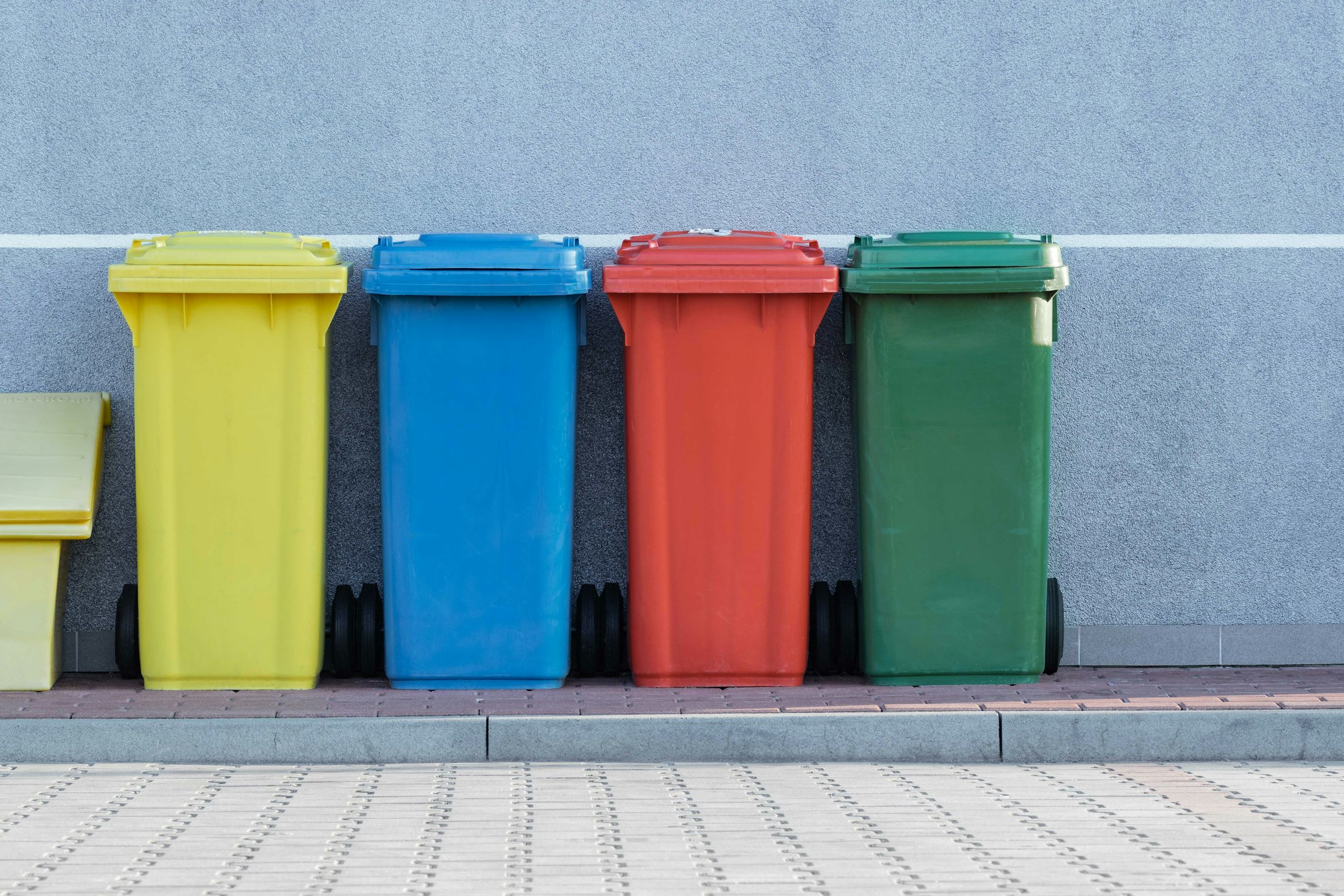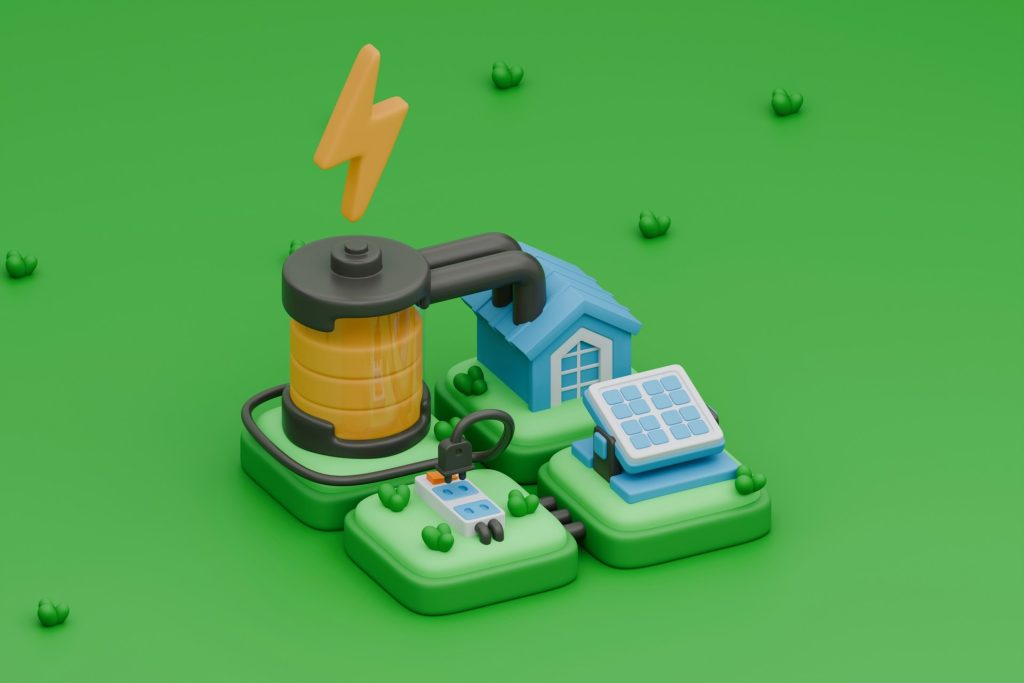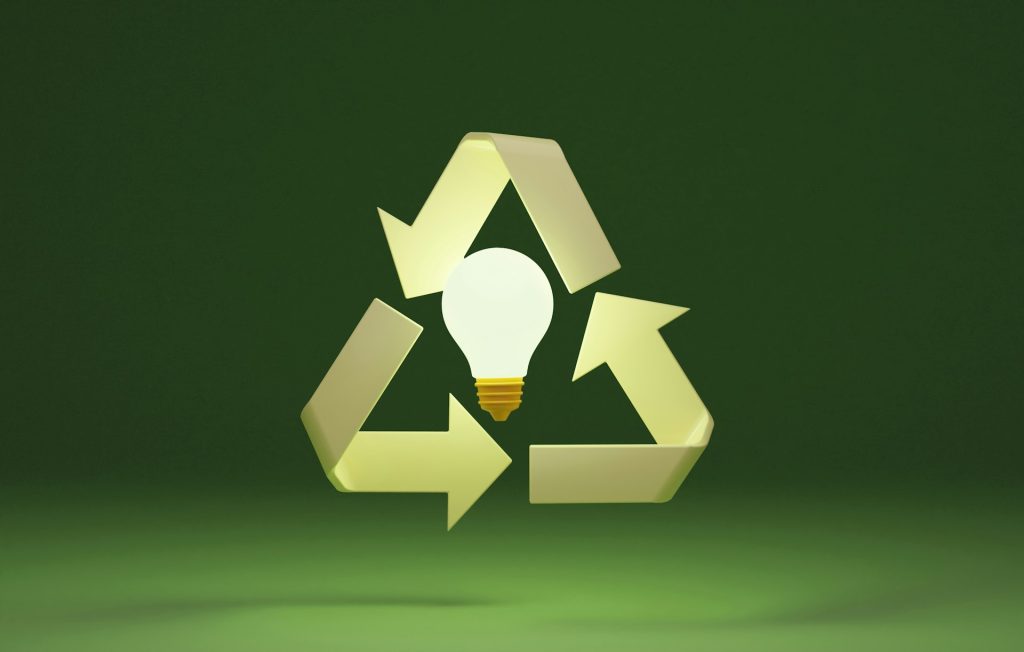Hey everyone! Today, we’re diving into the fascinating world of green technology. Specifically, we’re going to look at the lifecycle of green tech products—from conception to disposal. This topic isn’t just for the tech buffs or environmentalists; it’s crucial for anyone interested in the future of our planet. So, grab your favorite beverage, and let’s get into it.
Idea and Design: The Bedrock of Green Innovation
When it comes to green technology, the spark begins with a groundbreaking idea. These ideas are typically aimed at addressing specific environmental issues such as reducing the carbon footprint, conserving water, or cutting down on waste. The brainstorming phase is crucial, and it often involves a diverse team of thinkers including environmental scientists, design experts, and tech innovators.
Conceptualization
The journey starts with identifying a problem. For example, consider the issue of excessive energy consumption in homes. A team might come up with an idea for a smart home system that not only automates lighting and heating but also optimizes energy use based on behavioral patterns and real-time energy pricing.
Design Considerations
Once the problem is identified and a potential solution is conceptualized, the next step is the design phase. This isn’t just about aesthetics; it’s about integrating sustainability into every aspect of the product. Designers need to think about:
-
Material Selection: Choosing materials that are recycled, recyclable, or sustainably sourced is a priority. For instance, using biodegradable plastics or reclaimed wood can significantly reduce a product’s environmental impact.
-
Energy Efficiency: The product should consume minimal energy during operation. This involves selecting energy-efficient components and designing the product to use power only when necessary.
-
Longevity and Repairability: Designing products that last longer and can be easily repaired reduces waste and consumption. This might include modular designs that allow for easy replacement of parts instead of needing to discard the entire product.
-
Packaging: Even the packaging needs to be sustainable, using minimal materials, which should be recyclable or compostable. Reducing package size and weight also helps minimize transportation emissions.
Prototyping and Testing
After designing, prototyping begins. This stage is all about testing the product to ensure it meets the intended environmental benefits without compromising functionality. It often requires several rounds of adjustments and refinements based on testing results and feedback.
During this phase, lifecycle analysis (LCA) tools are frequently used to evaluate the environmental impact of different design choices. This helps designers understand where improvements can be made to further reduce the product’s ecological footprint.
Collaboration and Feedback
Collaboration with environmental experts, potential users, and industry stakeholders is vital. Feedback from these groups can lead to insights that significantly improve the product’s design and functionality. Engaging with the community, especially through platforms like social media or dedicated forums, can also provide valuable user input during the design phase.
Final Thoughts
The “Idea and Design” phase is perhaps the most critical in the lifecycle of a green tech product. It sets the foundation for how sustainable the product will be throughout its life. As consumers become more environmentally conscious, the demand for well-designed, sustainable products will only increase. Companies that invest in robust design processes are not only contributing to environmental conservation but are also positioning themselves as leaders in the inevitable green future.
By understanding these elements, we see how integrated and comprehensive the approach to green tech design must be. Every decision in this phase can have significant downstream effects on sustainability and user satisfaction.
Manufacturing: Turning Green Blueprints into Reality
The manufacturing phase is critical in the lifecycle of green tech products as it’s where ideas truly take form. However, this stage is also where the most significant environmental impacts can occur if not managed carefully. Here’s a deeper look at how green tech products are produced with sustainability at the forefront.
Sustainable Production Facilities
The first step towards sustainable manufacturing is creating production facilities that align with green principles. This means buildings designed for energy efficiency, using materials that provide good insulation, natural lighting, and, most importantly, powered by renewable energy sources. Factories might install solar panels, wind turbines, or utilize geothermal energy to meet their energy needs. For example, companies like Apple have committed to using 100% renewable energy across all their operations, setting a benchmark in the industry.
Reducing Waste and Emissions
Once the facilities are set up, attention turns to the manufacturing processes themselves. Key goals here include minimizing waste and reducing emissions. This can be achieved through various strategies:
- Lean manufacturing techniques: These are designed to increase efficiency and reduce waste, involving continuous improvement practices to lessen the use of raw materials and energy.
- Closed-loop systems: Some advanced facilities recycle waste products back into the production cycle, dramatically reducing material waste and environmental pollution.
- Advanced emissions control technologies: These are used to scrub pollutants from exhaust gases and manage waste responsibly to ensure that operations do not harm air, water, or soil quality.
Resource and Supply Chain Management
Sourcing materials responsibly is another crucial aspect. This involves selecting suppliers who also adhere to sustainable practices, ensuring that the raw materials are obtained in ways that do not deplete natural resources. For instance, sourcing recycled metals or rubber can significantly reduce the ecological footprint of manufacturing processes. Moreover, establishing a supply chain that prioritizes local suppliers reduces transportation distances, thereby cutting down carbon emissions associated with logistics.
Green Manufacturing Technologies
Innovations in manufacturing technology also play a significant role in making processes greener. For example, 3D printing has emerged as a powerful tool for reducing waste. It allows for precise material usage, creating components with minimal excess. Additionally, automated and AI-driven systems optimize production lines for energy efficiency and material usage, further minimizing waste.
Employee Training and Corporate Policies
Last but not least, human factors such as employee training and corporate policies geared towards sustainability are essential. Workers trained in eco-friendly practices and energy-saving techniques can significantly influence a facility’s overall environmental impact. Furthermore, companies that establish strong corporate policies that enforce sustainability goals ensure that these practices are taken seriously at all levels of the organization.
Summing Up
Manufacturing green tech products isn’t just about adhering to regulatory standards but pushing beyond them to achieve real sustainability. It requires a holistic approach, from the energy used in manufacturing processes to the way products are packaged and shipped. As this sector evolves, continuous improvements and innovations will be necessary to meet both consumer demands and global environmental goals.
By focusing on these areas, manufacturers of green technology are setting examples that, hopefully, more industries will follow, leading to a more sustainable world. This phase is where the commitment to sustainability is truly tested, and the impacts can be profound and far-reaching.
Distribution: Bridging Sustainable Production and Consumption
The distribution phase is all about getting the product from the factory floor to the consumer in the most eco-friendly manner possible. This involves several key strategies that focus on reducing the carbon footprint and improving efficiency throughout the supply chain.
Optimizing Logistics
Efficient logistics are fundamental in green distribution. This involves several layers:
- Route Optimization: Companies use sophisticated software to plan the most efficient delivery routes. This not only saves fuel but also reduces carbon emissions. Modern routing algorithms can adjust in real-time to traffic conditions, weather, and other variables to ensure optimal delivery times and minimal fuel usage.
- Load Optimization: Ensuring that vehicles are loaded efficiently maximizes space and reduces the number of trips needed, further cutting down emissions.
Sustainable Transportation Modes
Choosing the right mode of transportation is pivotal:
- Electric and Hybrid Vehicles: Many companies are transitioning their fleets to electric or hybrid vehicles, particularly for last-mile deliveries (the final step of the delivery process). Companies like Amazon are investing in thousands of electric delivery vans which significantly reduce greenhouse gas emissions compared to traditional diesel vans.
- Rail and Water Freight: For long-distance transportation, rail and water freight are much more energy-efficient and less polluting than road and air transport. Increasing the use of these methods can drastically reduce the environmental impact of shipping goods.
Packaging Innovations
The environmental impact of packaging is also a critical consideration in the distribution process:
- Eco-friendly Packaging: Using biodegradable, recyclable, or compostable materials helps reduce the waste associated with product distribution. Companies are increasingly turning to innovative materials like mushroom packaging or seaweed plastics.
- Minimalist Packaging: Reducing the size and amount of packaging not only cuts down on waste but also improves the efficiency of transportation by allowing more items to be packed into each shipment.
Collaborative Distribution
To further reduce the carbon footprint, some companies engage in collaborative distribution, where multiple firms share space in the same delivery trucks. This approach is particularly useful in urban areas where many retailers may be receiving goods from the same or nearby warehouses.
Technology Integration
Advanced technologies play a significant role in making green distribution possible:
- GPS and IoT: These technologies help companies track vehicles in real-time, monitor fuel usage, and even the condition of goods while in transit, ensuring that products are delivered efficiently and sustainably.
- AI and Machine Learning: These can predict the best routes and delivery methods, and also forecast demand to optimize stock levels, reducing the need for frequent restocking trips.
Closing Thoughts
The distribution phase is critical in maintaining the sustainability of green tech products. It requires careful consideration of how goods are transported, the efficiency of these methods, and the materials used for packaging. As the demand for green products increases, improving distribution strategies becomes even more vital, ensuring that the products not only live up to their eco-friendly promise but also help pave the way for new standards in sustainable logistics.
By focusing on these areas, companies can significantly reduce their environmental impact while also setting new benchmarks in green distribution practices. This not only helps the planet but also meets the growing consumer demand for companies to take real, substantive actions towards sustainability.
Usage: Maximizing the Eco-Friendly Potential of Green Tech
The usage phase of green technology products is where the rubber meets the road in terms of environmental impact. Effective use of these technologies can significantly reduce energy consumption, decrease waste, and even help shape greener consumer habits.
Energy Efficiency at the Forefront
One of the primary goals of green tech products during the usage phase is to optimize energy efficiency. This involves several key aspects:
- Smart Technology: Many green tech products, like smart thermostats or intelligent lighting systems, are designed to minimize energy usage. For instance, smart thermostats learn a household’s schedule and adjust heating and cooling to optimize energy use, significantly reducing unnecessary energy consumption.
- User Interfaces: Modern green technologies often feature user-friendly interfaces that provide consumers with real-time feedback on their energy consumption. This transparency helps users understand and manage their energy usage more effectively, encouraging energy-saving behaviors.
- Energy-Saving Settings: Products are increasingly equipped with default settings that favor energy conservation. For example, many new appliances have ‘eco-modes’ that are more energy-efficient and are set as the default mode.
Longevity and Maintenance
Ensuring that products are used for their entire designed life span is vital for reducing environmental impact:
- Durability: Green tech products are often designed to be more durable, which reduces the frequency of replacements and, consequently, the environmental impact associated with producing new products.
- Easy Maintenance and Repair: Products designed for easy maintenance and repair support the longevity of use. Offering readily available spare parts, repair manuals, and even DIY repair tutorials can extend a product’s life significantly.
Consumer Education and Engagement
Educating consumers on how to use green tech products effectively is equally important:
- Guides and Tutorials: Many companies provide detailed user guides and online tutorials to help consumers get the most out of their products.
- Community Forums: Some brands foster community forums where users can share tips, tricks, and advice on maximizing product efficiency and longevity.
- Incentives for Sustainable Practices: Programs that reward sustainable usage practices, like discounts on energy bills for reduced consumption, can motivate users to adopt and maintain energy-efficient behaviors.
Integration with Renewable Energy
The ultimate goal for many green tech products is integration with renewable energy sources:
- Solar-Powered Devices: From outdoor lights to home energy systems, solar-powered devices eliminate reliance on fossil fuels and reduce carbon footprints.
- Compatibility with Green Energy Plans: Many tech products now offer enhanced functionality when integrated with green energy plans from utilities that supply power from renewable sources.
Minimizing Standby Consumption
Even when not actively in use, electronic devices can consume power, known as standby power consumption. Green tech aims to minimize this wasteful energy use through:
- Advanced Power Management Systems: These systems cut power to devices when they’re not in use or switch them to a low-power mode.
- Smart Plugs and Strips: These can automatically turn off power to appliances that are in standby mode but still drawing power.
Conclusion
The usage phase is critical in realizing the full environmental potential of green technology. By focusing on energy efficiency, durability, consumer education, and integration with renewable resources, green tech products not only serve their primary function but also foster a broader shift towards sustainable living. As consumers become more aware of their environmental impact and how to mitigate it with green technology, we move closer to a more sustainable and responsible global community.
Disposal and Recycling: Closing the Loop on Green Tech
The end of a product’s useful life doesn’t have to mean the end of its environmental responsibility. Proper disposal and recycling are crucial for minimizing the ecological impact and for harnessing valuable materials that can be reused in new products. Here’s a deeper look into how this phase is managed effectively.
Responsible Disposal
Proper disposal practices are critical, especially for electronics and other tech products that might contain hazardous materials.
- Hazardous Waste Management: Many green tech products, such as batteries and electronic devices, contain substances that can be harmful if not disposed of correctly. Companies often provide information on how to dispose of products safely, and some offer take-back programs to ensure that hazardous materials are handled properly.
- Certified Disposal Facilities: It’s important that disposal occurs at facilities certified to handle electronic waste, which ensures that all components are processed in a way that minimizes environmental harm.
Maximizing Recycling
The goal of recycling is not just to reduce waste, but to reclaim and reuse valuable materials.
- Material Recovery: Advanced recycling processes are used to recover precious metals like gold and copper from tech products, as well as plastics and other materials that can be used in manufacturing new products.
- Design for Disassembly: Many green tech companies design products with disassembly in mind, making it easier to recycle components. This can involve using standardized screws and connectors that can be easily taken apart.
Promoting Upcycling
Beyond traditional recycling, upcycling is a process where old products are not just recycled, but transformed into products of higher value.
- Creative Reuse: Companies and individuals alike find innovative ways to reuse tech components. For example, old smartphone screens might be used in art installations or educational tools.
- Upcycling Initiatives: Some companies run programs where they collect old products and repurpose them into new offerings, often collaborating with artists and designers.
E-Waste Recycling Programs
With the rapid accumulation of electronic waste, specialized e-waste recycling programs have become more important.
- Local and Global Initiatives: Many municipalities and countries have established e-waste recycling programs to manage the growing issue of tech waste. These programs provide convenient drop-off points for old electronics and ensure they are recycled responsibly.
- Manufacturer Take-Back Schemes: Some manufacturers offer take-back schemes where consumers can return old products directly to the company for recycling.
Consumer Education
Educating consumers on the importance of recycling and the proper channels for disposal of green tech products is key to effective recycling.
- Awareness Campaigns: Companies and environmental organizations often run campaigns to educate the public about the environmental impact of e-waste and the available recycling options.
- Resources and Guides: Online resources, guides, and apps can help consumers understand where and how they can recycle their tech products.
Conclusion
The disposal and recycling phase is pivotal in the lifecycle of green tech products. Effective management of this phase ensures that the environmental benefits envisioned during the design and production stages continue through to the end of the product’s life. By focusing on responsible disposal, maximizing recycling, promoting upcycling, and educating consumers, companies can significantly reduce the environmental impact of their products. This not only helps in waste reduction but also promotes a circular economy where every component is valued and nothing is wasted.
Wrapping It All Up
Understanding the lifecycle of green tech products helps us see the bigger picture of what it means to be truly sustainable. It’s not just about buying a product labeled “green” but understanding how it was made, how it gets to you, how you use it, and where it ends up. Each stage of the lifecycle offers opportunities for us to make better choices.
So, the next time you’re considering a new gadget or appliance, take a moment to think about its journey. Let’s be mindful consumers and contribute to a healthier planet, one product at a time!
Thanks for sticking around, and remember, every small step towards sustainability is a leap towards a healthier earth!




